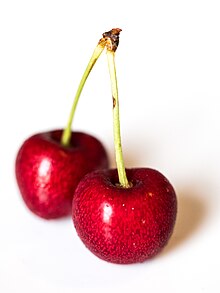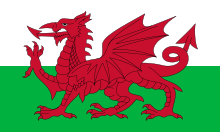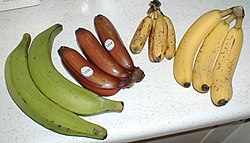Template:Transclude random excerpt/testcases
| This is the template test cases page for the sandbox of Template:Transclude random excerpt. to update the examples. If there are many examples of a complicated template, later ones may break due to limits in MediaWiki; see the HTML comment "NewPP limit report" in the rendered page. You can also use Special:ExpandTemplates to examine the results of template uses. You can test how this page looks in the different skins and parsers with these links: |
Random cricket article from list
[edit]If it's always Cricket bat, be suspicious!
| {{Transclude random excerpt}} | {{Transclude random excerpt/sandbox}} |
|---|---|
 The Yorkshire captaincy affair of 1927 arose from a disagreement among members of Yorkshire County Cricket Club over the selection of a new captain to succeed the retired Major Arthur Lupton. The main issue was whether a professional cricketer should be appointed to the post. It was a tradition throughout English county cricket that captains should always be amateurs. At Yorkshire, a succession of amateur captains held office in the 1920s, on the grounds of their supposed leadership qualities, although they were not worth their place in the team as cricketers. None lasted long; after Lupton's departure some members felt it was time to appoint a more accomplished cricketer on a long-term basis. The Yorkshire committee, prompted by the influential county president, Lord Hawke, approached Herbert Sutcliffe, one of the side's leading professionals. After Sutcliffe's provisional acceptance of the captaincy, controversy arose. Some members objected to the appointment on the traditional grounds that Sutcliffe was not an amateur; others felt that if a professional was to be appointed, the post should be offered to the county's senior professional, Wilfred Rhodes, who had been playing much longer than Sutcliffe. Rhodes himself was offended that he had not been approached. When Sutcliffe became aware of the controversy, he withdrew his acceptance. No offer was made to Rhodes, and the county subsequently appointed amateur William Worsley as captain. He was respected by the team but had little personal success, lasted for just two seasons, and was followed by two further short-term leaders. In 1933 Brian Sellers, a more competent amateur, was appointed and became the long-serving captain that Yorkshire had sought. (Full article...) |
 The Yorkshire captaincy affair of 1927 arose from a disagreement among members of Yorkshire County Cricket Club over the selection of a new captain to succeed the retired Major Arthur Lupton. The main issue was whether a professional cricketer should be appointed to the post. It was a tradition throughout English county cricket that captains should always be amateurs. At Yorkshire, a succession of amateur captains held office in the 1920s, on the grounds of their supposed leadership qualities, although they were not worth their place in the team as cricketers. None lasted long; after Lupton's departure some members felt it was time to appoint a more accomplished cricketer on a long-term basis. The Yorkshire committee, prompted by the influential county president, Lord Hawke, approached Herbert Sutcliffe, one of the side's leading professionals. After Sutcliffe's provisional acceptance of the captaincy, controversy arose. Some members objected to the appointment on the traditional grounds that Sutcliffe was not an amateur; others felt that if a professional was to be appointed, the post should be offered to the county's senior professional, Wilfred Rhodes, who had been playing much longer than Sutcliffe. Rhodes himself was offended that he had not been approached. When Sutcliffe became aware of the controversy, he withdrew his acceptance. No offer was made to Rhodes, and the county subsequently appointed amateur William Worsley as captain. He was respected by the team but had little personal success, lasted for just two seasons, and was followed by two further short-term leaders. In 1933 Brian Sellers, a more competent amateur, was appointed and became the long-serving captain that Yorkshire had sought. (Full article...) |
Random article from a list that's mainly rubbish
[edit]Should always be Cat or Dog
| {{Transclude random excerpt}} | {{Transclude random excerpt/sandbox}} |
|---|---|
|
The dog (Canis familiaris or Canis lupus familiaris) is a domesticated descendant of the wolf. Also called the domestic dog, it was domesticated from an extinct population of wolves during the Late Pleistocene, over 14,000 years ago by hunter-gatherers, prior to the development of agriculture. The dog was the first species to be domesticated by humans. Experts estimate that due to their long association with humans, dogs have expanded to a large number of domestic individuals and gained the ability to thrive on a starch-rich diet that would be inadequate for other canids. The dog has been selectively bred over millennia for various behaviors, sensory capabilities, and physical attributes. Dog breeds vary widely in shape, size, and color. They have identical skeletal structures (with the exception of the tail and skull), powerful jaws that house around 42 teeth, and well-developed senses of smell, hearing and sight. They perform many roles for humans, such as hunting, herding, pulling loads, protection, assisting police and the military, companionship, therapy, and aiding disabled people. Communication in dogs include eye gaze, facial expression, vocalization, body posture (including movements of bodies and limbs), and gustatory communication (scents, pheromones, and taste). They mark their territories by urinating on them, which is more likely when entering a new environment. Over the millennia, dogs became uniquely adapted to human behavior, and the human–canine bond has been a topic of frequent study. This influence on human society has given them the sobriquet of "man's best friend". The dog is the most popular pet in the United States, present in 34–40% of households. In developed countries, around 20% of dogs are kept as pets, while 75% of the population in developing countries largely consists of feral and community dogs. As of 2020, the global dog population was estimated at 700 million to 1 billion. (Full article...) |
The dog (Canis familiaris or Canis lupus familiaris) is a domesticated descendant of the wolf. Also called the domestic dog, it was domesticated from an extinct population of wolves during the Late Pleistocene, over 14,000 years ago by hunter-gatherers, prior to the development of agriculture. The dog was the first species to be domesticated by humans. Experts estimate that due to their long association with humans, dogs have expanded to a large number of domestic individuals and gained the ability to thrive on a starch-rich diet that would be inadequate for other canids. The dog has been selectively bred over millennia for various behaviors, sensory capabilities, and physical attributes. Dog breeds vary widely in shape, size, and color. They have identical skeletal structures (with the exception of the tail and skull), powerful jaws that house around 42 teeth, and well-developed senses of smell, hearing and sight. They perform many roles for humans, such as hunting, herding, pulling loads, protection, assisting police and the military, companionship, therapy, and aiding disabled people. Communication in dogs include eye gaze, facial expression, vocalization, body posture (including movements of bodies and limbs), and gustatory communication (scents, pheromones, and taste). They mark their territories by urinating on them, which is more likely when entering a new environment. Over the millennia, dogs became uniquely adapted to human behavior, and the human–canine bond has been a topic of frequent study. This influence on human society has given them the sobriquet of "man's best friend". The dog is the most popular pet in the United States, present in 34–40% of households. In developed countries, around 20% of dogs are kept as pets, while 75% of the population in developing countries largely consists of feral and community dogs. As of 2020, the global dog population was estimated at 700 million to 1 billion. (Full article...) |
Random article from a list that's totally rubbish
[edit]Error: no valid article
| {{Transclude random excerpt}} | {{Transclude random excerpt/sandbox}} |
|---|---|
|
Excerpt error: No valid pages found |
Excerpt error: No valid pages found |
All articles
[edit]| {{Transclude random excerpt}} | {{Transclude random excerpt/sandbox}} |
|---|---|
 An apple is a round, edible fruit produced by an apple tree (Malus spp., among them the domestic or orchard apple; Malus domestica). Apple trees are cultivated worldwide and are the most widely grown species in the genus Malus. The tree originated in Central Asia, where its wild ancestor, Malus sieversii, is still found. Apples have been grown for thousands of years in Eurasia and were introduced to North America by European colonists. Apples have religious and mythological significance in many cultures, including Norse, Greek, and European Christian tradition. (Full article...) A banana is an elongated, edible fruit – botanically a berry – produced by several kinds of large herbaceous flowering plants in the genus Musa. In some countries, cooking bananas are called plantains, distinguishing them from dessert bananas. The fruit is variable in size, color, and firmness, but is usually elongated and curved, with soft flesh rich in starch covered with a peel, which may have a variety of colors when ripe. It grows upward in clusters near the top of the plant. Almost all modern edible seedless (parthenocarp) cultivated bananas come from two wild species – Musa acuminata and Musa balbisiana, or hybrids of them. (Full article...) |
 An apple is a round, edible fruit produced by an apple tree (Malus spp., among them the domestic or orchard apple; Malus domestica). Apple trees are cultivated worldwide and are the most widely grown species in the genus Malus. The tree originated in Central Asia, where its wild ancestor, Malus sieversii, is still found. Apples have been grown for thousands of years in Eurasia and were introduced to North America by European colonists. Apples have religious and mythological significance in many cultures, including Norse, Greek, and European Christian tradition. (Full article...) A banana is an elongated, edible fruit – botanically a berry – produced by several kinds of large herbaceous flowering plants in the genus Musa. In some countries, cooking bananas are called plantains, distinguishing them from dessert bananas. The fruit is variable in size, color, and firmness, but is usually elongated and curved, with soft flesh rich in starch covered with a peel, which may have a variety of colors when ripe. It grows upward in clusters near the top of the plant. Almost all modern edible seedless (parthenocarp) cultivated bananas come from two wild species – Musa acuminata and Musa balbisiana, or hybrids of them. (Full article...) |
Template in image caption not processed correctly
[edit]Caption should be:
Right to left:
- The Capture of the 'Nuestra Señora de Covadonga' (20 April 1743)
- The Battle of Fontenoy (11 May 1745)
- The Battle of Hohenfriedberg (4 June 1745)
- The Siege of Bergen op Zoom (14 July – 18 September 1747)
Actual caption shows asterisks:
| {{Transclude random excerpt}} | {{Transclude random excerpt/sandbox}} |
|---|---|
|
The War of the Austrian Succession was a European conflict fought between 1740 and 1748, primarily in Central Europe, the Austrian Netherlands, Italy, the Atlantic Ocean and Mediterranean Sea. Related conflicts include King George's War in North America, the War of Jenkins' Ear, the First Carnatic War, and the First and Second Silesian Wars. Its pretext was the right of Maria Theresa to succeed her father, Emperor Charles VI, as ruler of the Habsburg monarchy. France, Prussia, and Bavaria saw it as an opportunity to challenge Habsburg power, while Maria Theresa was backed by Britain, the Dutch Republic, and Hanover, collectively known as the Pragmatic Allies. As the conflict widened, it drew in other participants, among them Spain, Sardinia, Saxony, Sweden, and Russia. (Full article...) |
The War of the Austrian Succession was a European conflict fought between 1740 and 1748, primarily in Central Europe, the Austrian Netherlands, Italy, the Atlantic Ocean and Mediterranean Sea. Related conflicts include King George's War in North America, the War of Jenkins' Ear, the First Carnatic War, and the First and Second Silesian Wars. Its pretext was the right of Maria Theresa to succeed her father, Emperor Charles VI, as ruler of the Habsburg monarchy. France, Prussia, and Bavaria saw it as an opportunity to challenge Habsburg power, while Maria Theresa was backed by Britain, the Dutch Republic, and Hanover, collectively known as the Pragmatic Allies. As the conflict widened, it drew in other participants, among them Spain, Sardinia, Saxony, Sweden, and Russia. (Full article...) |
Another image caption problem
[edit]Image caption should be:
Administrative Siberian Federal District
Geographic Siberia
North Asia, greatest extent of Siberia
Actual caption does not display:
| {{Transclude random excerpt}} | {{Transclude random excerpt/sandbox}} |
|---|---|
 |
 |
List
[edit]Show a list
| {{Transclude random excerpt}} | {{Transclude random excerpt/sandbox}} | ||||
|---|---|---|---|---|---|
 Wales (Welsh: Cymru [ˈkəmrɨ] ) is a country that is part of the United Kingdom. It is bordered by the Irish Sea to the north and west, England to the east, the Bristol Channel to the south, and the Celtic Sea to the south-west. As of 2021[update], it had a population of 3.2 million. It has a total area of 21,218 square kilometres (8,192 sq mi) and over 2,700 kilometres (1,680 mi) of coastline. It is largely mountainous with its higher peaks in the north and central areas, including Snowdon (Yr Wyddfa), its highest summit. The country lies within the north temperate zone and has a changeable, maritime climate. Its capital and largest city is Cardiff. (Full article...)
|
 Wales (Welsh: Cymru [ˈkəmrɨ] ) is a country that is part of the United Kingdom. It is bordered by the Irish Sea to the north and west, England to the east, the Bristol Channel to the south, and the Celtic Sea to the south-west. As of 2021[update], it had a population of 3.2 million. It has a total area of 21,218 square kilometres (8,192 sq mi) and over 2,700 kilometres (1,680 mi) of coastline. It is largely mountainous with its higher peaks in the north and central areas, including Snowdon (Yr Wyddfa), its highest summit. The country lies within the north temperate zone and has a changeable, maritime climate. Its capital and largest city is Cardiff. (Full article...)
|
References
[edit]This section contains references and notes. It should be empty. If anything appears here then a template may need to be removed from the transcluded article.



